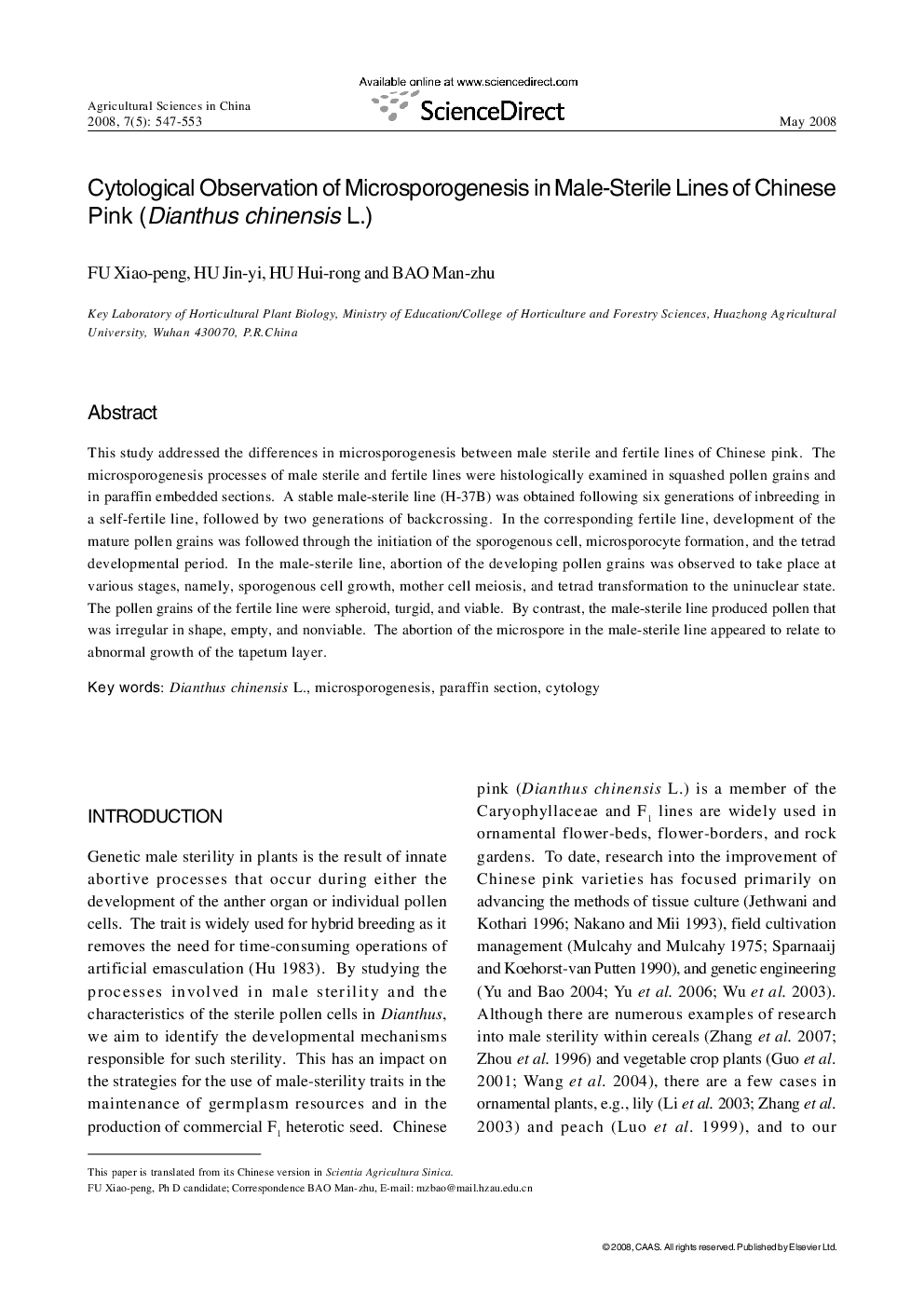| Article ID | Journal | Published Year | Pages | File Type |
|---|---|---|---|---|
| 4490685 | Agricultural Sciences in China | 2008 | 7 Pages |
This study addressed the differences in microsporogenesis between male sterile and fertile lines of Chinese pink. The microsporogenesis processes of male sterile and fertile lines were histologically examined in squashed pollen grains and in paraffin embedded sections. A stable male-sterile line (H-37B) was obtained following six generations of inbreeding in a self-fertile line, followed by two generations of backcrossing. In the corresponding fertile line, development of the mature pollen grains was followed through the initiation of the sporogenous cell, microsporocyte formation, and the tetrad developmental period. In the male-sterile line, abortion of the developing pollen grains was observed to take place at various stages, namely, sporogenous cell growth, mother cell meiosis, and tetrad transformation to the uninuclear state. The pollen grains of the fertile line were spheroid, turgid, and viable. By contrast, the male-sterile line produced pollen that was irregular in shape, empty, and nonviable. The abortion of the microspore in the male-sterile line appeared to relate to abnormal growth of the tapetum layer.
